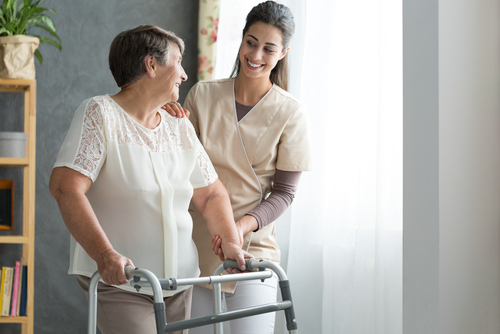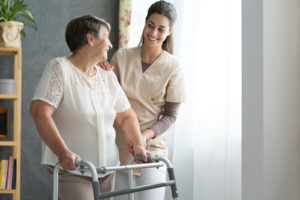Creating A Safe And Comfortable Environment In Assisted Living Homes
- Home
- CARE CENTER
- Creating A Safe And Comfortable Environment In Assisted Living Homes

Creating A Safe And Comfortable Environment In Assisted Living Homes
8 Mar, 2024
Assisted Living
Assisted living homes serve as a vital support system for individuals who require assistance with daily activities while maintaining a sense of independence and dignity. Central to the mission of these homes is the creation of a safe and comfortable environment where residents can thrive physically, mentally, and emotionally. In this article, we delve into essential aspects of ensuring safety and comfort in assisted living homes.
Understanding the Importance of Safety and Comfort
Safety and comfort are fundamental pillars of quality care in assisted living homes. These environments should provide residents with a sense of security and well-being, allowing them to lead fulfilling lives. Creating such an environment involves careful planning, implementation of safety measures, and attention to residents’ individual needs and preferences.
1. Accessibility and Mobility
Ensuring accessibility and mobility within assisted living homes is crucial for residents with varying degrees of mobility. Facilities should be designed with features such as wide doorways, ramps, handrails, and elevators to accommodate residents with mobility aids such as wheelchairs or walkers. Additionally, furniture arrangement should allow for easy navigation and movement within living spaces.
2. Fall Prevention
Falls are a significant concern for older adults, and preventing them is paramount in assisted living homes. Strategies for fall prevention include installing grab bars in bathrooms and hallways, using non-slip flooring surfaces, and removing tripping hazards such as loose rugs or clutter. Regular assessments of residents’ mobility and balance can also help identify individuals at risk of falls and implement appropriate interventions.
3. Emergency Preparedness
Assisted living homes must have robust emergency preparedness plans in place to address various scenarios, including medical emergencies, natural disasters, and power outages. Staff should receive training in emergency procedures, and residents should be familiar with evacuation routes and emergency protocols. Additionally, facilities should have backup power sources and sufficient emergency supplies to ensure residents’ safety and well-being during emergencies.
4. Medication Management
Proper medication management is essential for residents’ health and safety in assisted living homes. Facilities should have systems in place for administering medications, including trained staff members responsible for medication distribution and monitoring. Residents should receive education on their medications, including dosage instructions and potential side effects, to promote medication adherence and safety.
5. Staff Training and Supervision
Well-trained and qualified staff are crucial for maintaining a safe and comfortable environment in assisted living homes. Staff members should receive training in areas such as resident care, emergency response, infection control, and communication skills. Regular supervision and performance evaluations can help ensure that staff members adhere to best practices and provide high-quality care to residents.
6. Personalized Care Plans
Each resident in an assisted living home has unique needs and preferences, and personalized care plans are essential for addressing these individual requirements. Care plans should be developed in collaboration with residents and their families, taking into account factors such as medical conditions, mobility limitations, dietary preferences, and social preferences. Regular assessments and updates to care plans ensure that residents’ evolving needs are addressed effectively.
7. Nutritious Dining Options
A nutritious and satisfying dining experience is essential for residents’ overall well-being in assisted living homes. Facilities should offer a variety of menu options that accommodate residents’ dietary preferences and restrictions, including special diets for medical conditions such as diabetes or hypertension. Meal times should be structured to promote socialization and provide opportunities for residents to enjoy healthy, balanced meals.
8. Social Engagement and Activities
Social engagement and meaningful activities are vital aspects of creating a comfortable and fulfilling environment in assisted living homes. Facilities should offer a diverse range of activities and programs that cater to residents’ interests and abilities, including exercise classes, arts and crafts, outings, and social gatherings. Encouraging residents to participate in these activities promotes socialization, cognitive stimulation, and overall well-being.
Creating a safe and comfortable environment in assisted living homes requires a holistic approach that addresses residents’ physical, emotional, and social needs. By prioritizing accessibility, fall prevention, emergency preparedness, medication management, staff training, personalized care, nutritious dining options, and social engagement, assisted living homes can provide residents with the support and resources they need to thrive in their golden years.

Leave a Comment